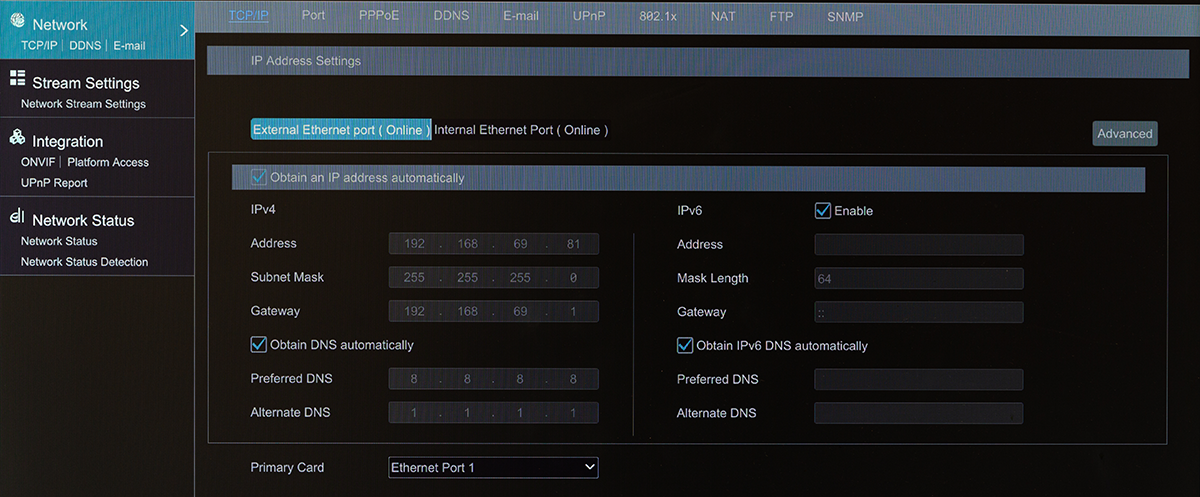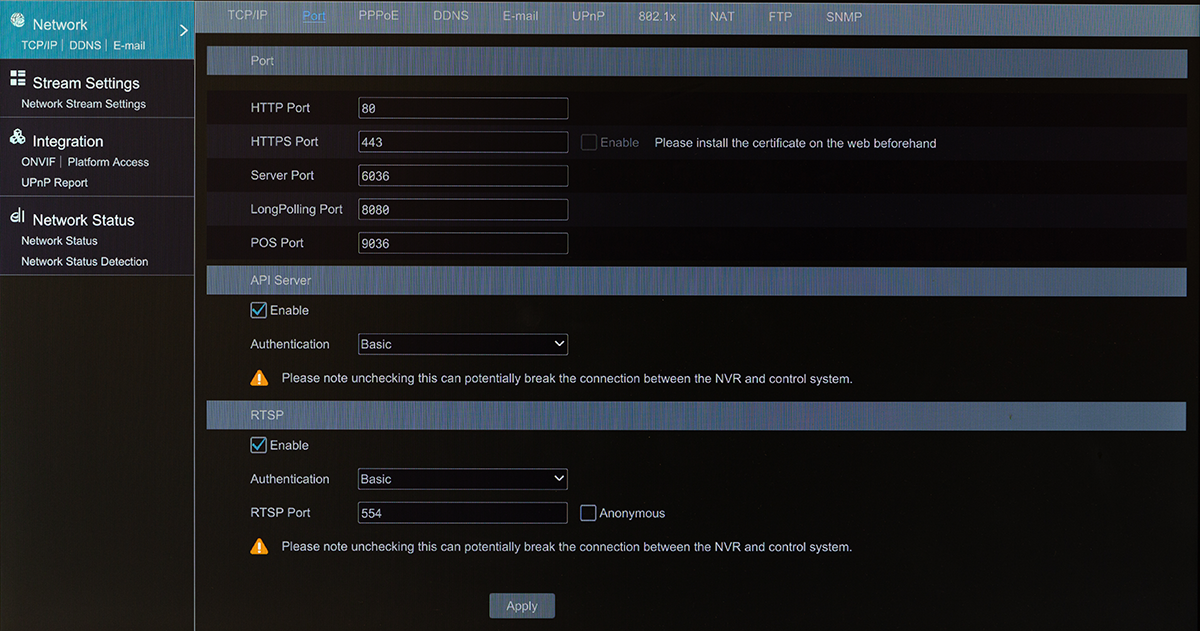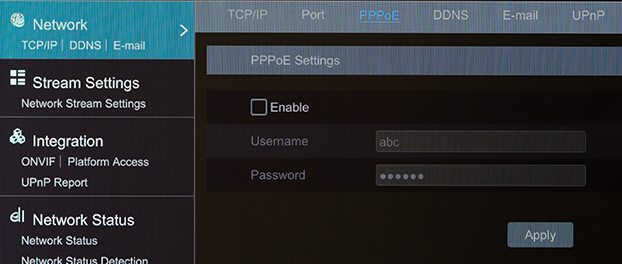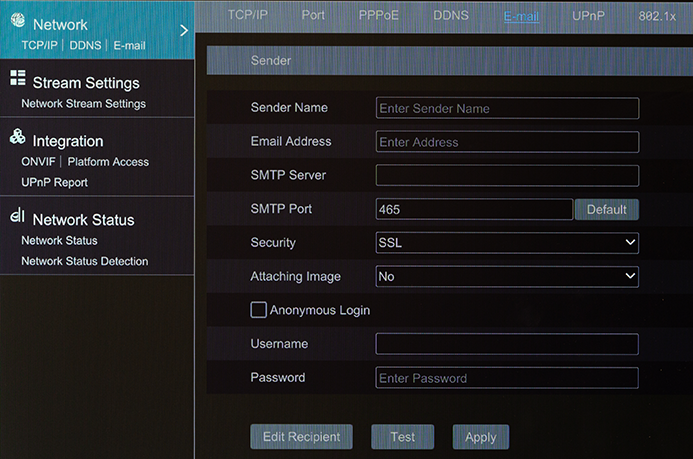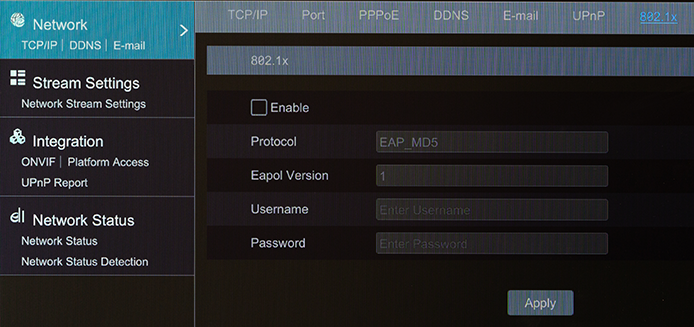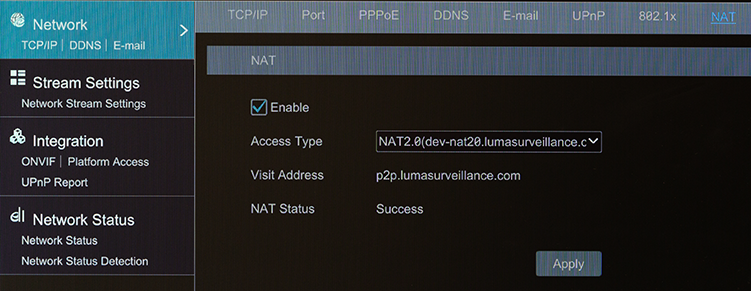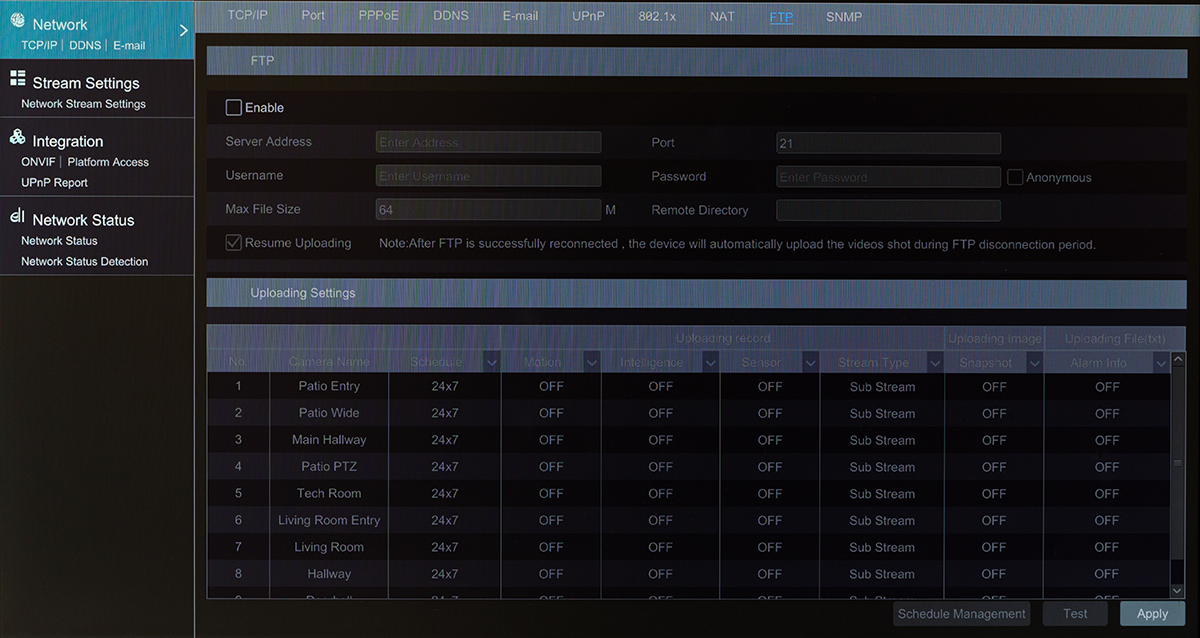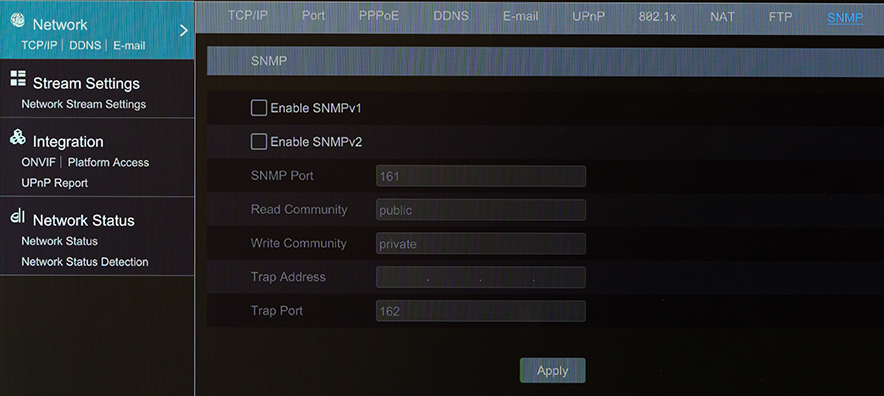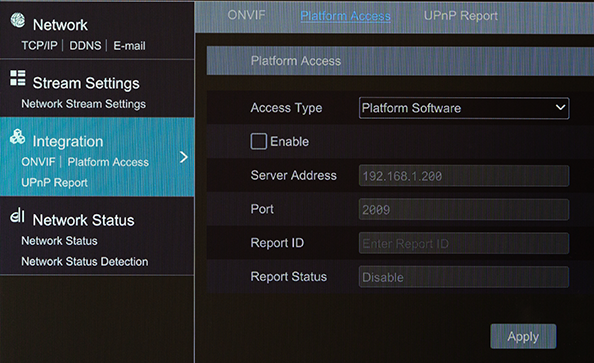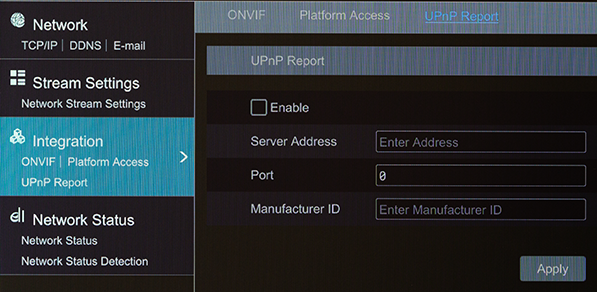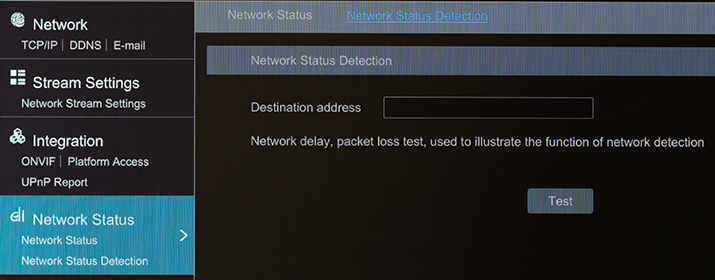NVR local interface - Settings: Network
This handles how your NVR interacts with your entire network.
- Network page
- Stream Settings page
- Integration page
- Network Status page
Network page
Be aware of the following limitations:
|
NVR |
120 4CH |
120 8CH |
220 8CH |
220 16CH |
420 16CH |
820 32CH |
|---|---|---|---|---|---|---|
|
Max Traffic |
40 Mbps |
80 Mbps |
80 Mbps |
96 Mbps |
160 Mbps |
196 Mbps |
TCP/IP tab (for 120/220 NVRs)
Ethernet Port 1: Here you can set your NVR’s IP address manually, or let the router handle it automatically (using DHCP). We recommend leaving this set to automatic.
Advanced: This button lets you set a secondary IP and subnet.
Internal Ethernet Port: Here you configure the settings for your gateway.
Click Apply to save your changes.
TCP/IP tab (for 420/820 NVRs)
These high-capacity NVRs have two Ethernet ports. Each port acts as a failover for the other. Plug both ports into your surveillance switch.
Ethernet Port #: Here you can set your NVR’s IP address manually, or let the router handle it automatically (using DHCP). We recommend leaving this set to automatic.
Advanced: This button lets you set MTUs for each port.
Default Route: Select which Ethernet port has priority for data transmission.
Internal Ethernet Port: Here you configure the settings for your gateway.
Click Apply to save your changes.
Port
Here you configure the port settings for HTTP, HTTPS, etc.
The exact settings for API Server and RTSP depend on your control system and email provider, respectively.
PPPoE
Set the user name and password for Point-to-Point Protocol over Ethernet communication.
DDNS
If you are not using OvrC or Control4, here you can configure a DDNS name for remote access to your system.
Here you configure the emails that the camera sends with alerts.
Sender Name: This is who the email appears to be from.
Email Address: If someone replies to this message it’ll go here.
Next, fill in the Server Address and SMTP Port, and select the security mode.
If Attaching Image is enabled, the NVR adds a snapshot of the event to the email.
Finally, enter the credentials for the email server, or click Anonymous Login.
Click Test to verify all settings, and Apply when it works.
Click Edit Recipient to open a page that lets you select who gets the alert emails.
-
To add a recipient, enter their email in the text box, and select whether they get emails 7 days a week, or on another schedule (the default schedules are weekdays only or weekends only). Click Add.
-
Once a recipient is added, you can change their schedule or click the trashcan to delete them.
-
Click Apply to save your changes before clicking any of the other buttons.
-
Edit Sender: Sends you back to the base email page. To view or redact the sender's assigned email, click the eye icon to the left.
-
Schedule Management: This opens the Schedule dialog. Three schedules are preset for your system. The first is the default 24×7 schedule. This cannot be edited or deleted.
The other two default to weekdays (24×5) and weekends (24×2), but can be edited and renamed to fit your needs. Click Add above the schedule list to add a new schedule.
When you click Edit, it opens to the Edit Schedule dialog. At the top you can rename the schedule. Click Erase or Add to modify the schedule bars. Click and drag in a schedule bar to add or erase times.
UPnP
Enable or disable Universal Plug-and-Play. If the Map Type is set to manual, you can edit each port's settings.
802.1x
Manually select the NVR's authentication mode.
NAT
This displays our P2P server information, which is used for the Luma View app.
FTP
Here you configure the settings for your FTP server. Click Enable and fill out the data for the system. Once finished, click Test to ensure it works properly.
The table shows the cameras you have set up to use the FTP server, and which data you want uploaded.
Schedule Management: This opens the Schedule dialog. Three schedules are preset for your system. The first is the default 24×7 schedule. This cannot be edited or deleted.
The other two default to weekdays (24×5) and weekends (24×2), but can be edited and renamed to fit your needs. Click Add above the schedule list to add a new schedule.
When you click Edit, it opens to the Edit Schedule dialog. At the top you can rename the schedule. Click Erase or Add to modify the schedule bars. Click and drag in a schedule bar to add or erase times.
SNMP
Monitor your network for any concerns.
Stream Settings page
Here you set the parameters of each camera’s sub streams. These vary based on your network capacity and need, though we recommend using H.265+ wherever possible.
Integration page
This handles automated access into your surveillance system.
ONVIF
Enable ONVIF if you plan to use third-party VMS platforms.
Click Add to add a user for your ONVIF system, then use the dialog box to set that user's a username, password, and capability.
Platform Access
This is for integration into 3rd party VMS platforms.
UPnP Report
To enable the UPnP Report, you must first enable UPnP functionality, which is done in the Network section, above. Some third-party VMS platforms support this protocol, and it is used to get the NVR to work with these systems.
Network Status page
Network Status
This gives basic information regarding IP addresses, bandwidth, ports, etc., to assist with troubleshooting. You cannot edit anything, but you can refresh the data by clicking the button in the upper right-hand corner.
Network Status Detection
Click Test to run a ping test to the URL of your choice.
